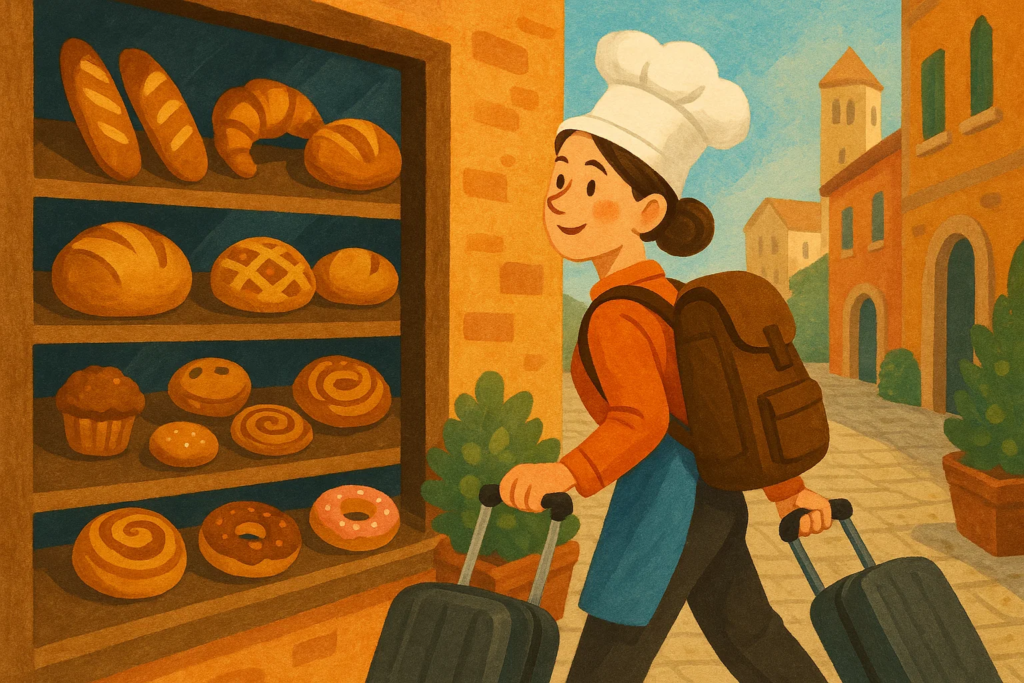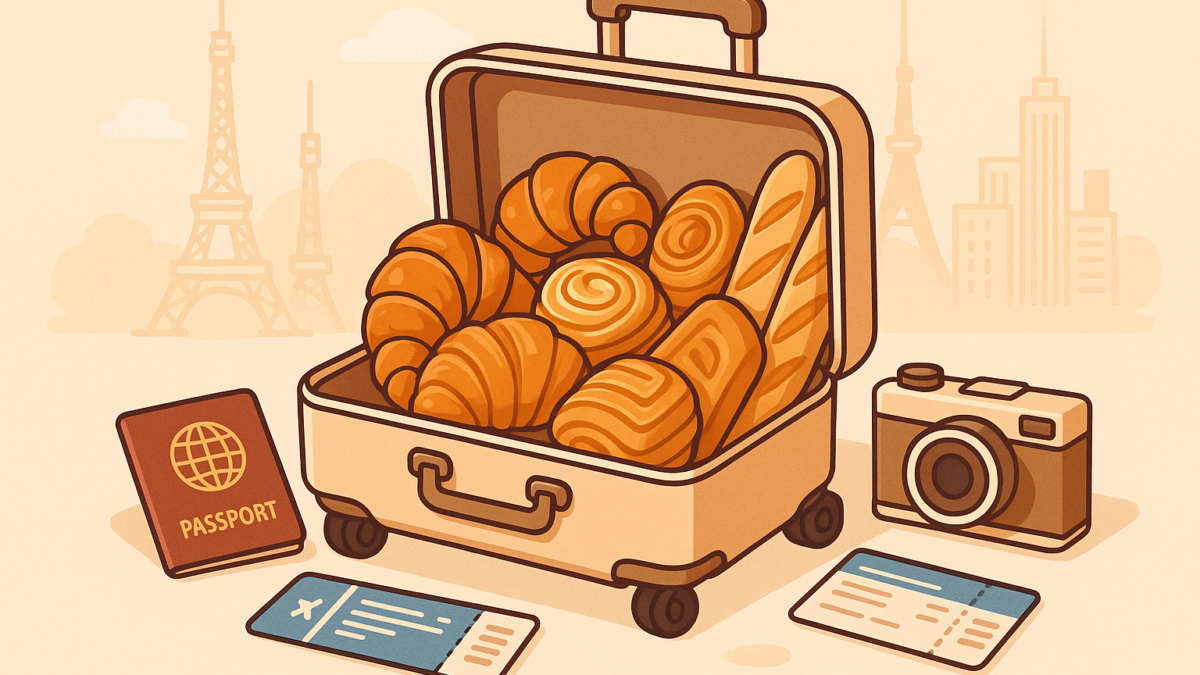Table of Contents
Introduction
In the ever-evolving landscape of travel, one trend is rising faster than a perfectly proofed sourdough: bakery tourism. What used to be a casual stop for a croissant or a cupcake has become the primary reason many young travelers pack their bags. Leading this delicious revolution? Gen Z — a generation fueled by aesthetics, authenticity, and almond croissants.
Welcome to the world of bakery travel, where cities are judged by their sourdough, and a 90-minute queue for pastries is not just accepted, but celebrated.
What Is Bakery Travel?

Bakery travel is the phenomenon of people — especially young, digitally native travelers — planning trips centered around visiting destination bakeries. Instead of museums or monuments, the main attraction is often a hole-in-the-wall patisserie known for a viral croissant cube or kimchi-filled danish.
Some travelers even hop countries or cross states for a single pastry experience, often documenting the entire journey on Instagram or TikTok. The experience isn’t just about taste; it’s about aesthetic discovery, cultural immersion, and a kind of culinary pilgrimage that reflects modern values.
Why Gen Z Is Driving the Craze
There are a few clear reasons why bakery tourism has taken off — and why Gen Z is so invested in it.
- Experience Over Everything: Gen Z places a premium on experiences over material goods. For them, eating a pastry in a beautifully lit, independently run bakery in Paris or Seoul isn’t just food consumption — it’s an experience worth traveling for, one that feeds the soul and the feed.
- Social Media Amplification: Platforms like TikTok and Instagram are pivotal in spreading the word about trendy bakeries. One viral video of a flaky cruffin or pastel-glazed doughnut can catapult a bakery into international fame overnight. Gen Z uses social platforms as search engines, and often plan their itineraries around places they’ve saved or bookmarked online.
- Support for Independent Creators: Unlike older generations who may gravitate toward established restaurant brands or food chains, Gen Z tends to support local, independent bakers. They care about authenticity, small-batch quality, and stories behind the brand — especially if the business is ethical, minority-owned, or environmentally conscious.
- Cultural Curiosity Through Food: Bakeries often reflect the flavors, traditions, and innovations of their region. Whether it’s a miso butter cookie in Tokyo, a goat cheese galette in Copenhagen, or a pistachio cardamom bun in Mumbai, bakeries become a gateway to local culture.
The Business of Bakery Travel

This trend isn’t just fun — it’s big business. Bakeries are seeing unprecedented levels of tourism and attention. Some have added queue management systems, pre-order slots, or even limited edition drops for those willing to travel.
Cities like Paris, Melbourne, Copenhagen, Tokyo, and New York are now seen not just as cultural hubs, but pastry capitals. Airbnb experiences, Google travel guides, and influencer collabs now often include bakery stops as essential attractions.
Tech, Travel & Taste: A Digital Convergence
What makes this trend unique is how seamlessly it blends digital behavior with physical experience. Food discovery happens online. Travel booking follows shortly after. The end goal? A perfectly flaky croissant, captured under natural light and posted with a thoughtfully minimal caption.
It’s the intersection of search, storytelling, and sensory satisfaction.
Even Google search trends show a steady rise in terms like:
- “Best bakeries in [city]”
- “Viral pastries 2025”
- “Bakery crawl itinerary”
This suggests that bakery tourism isn’t a fad — it’s fast becoming a recognized travel niche.
The Flip Side: Is It Sustainable?
With popularity comes questions. Some critics point out that flying across borders for a pastry contributes to carbon emissions. Others worry that viral success may overwhelm small businesses or push up prices for locals.
However, many bakeries now embrace eco-conscious practices, using locally sourced ingredients, biodegradable packaging, and in some cases, carbon offsetting initiatives. The goal is to keep the movement authentic, sustainable, and inclusive — a reflection of Gen Z’s values.
Final Thoughts: A Deliciously New Way to Explore the World

Bakery travel represents more than just a sweet tooth — it’s about intentional exploration. Gen Z is reshaping what travel looks like in a post-pandemic world, prioritizing quality, culture, and connection over conventional tourism.
In a time when global attention spans are short and travel motivations are rapidly evolving, bakery tourism offers something enduring — a shared human joy in good food, creativity, and discovery.
So the next time you’re booking a trip, don’t just search for hotels or hikes. Maybe ask: Where’s the best croissant in town? You might just find your next great adventure — wrapped in parchment paper and dusted with sugar.
You May Also Like: How Apps Collect Your Data — And Why It’s Not Always a Bad Thing





